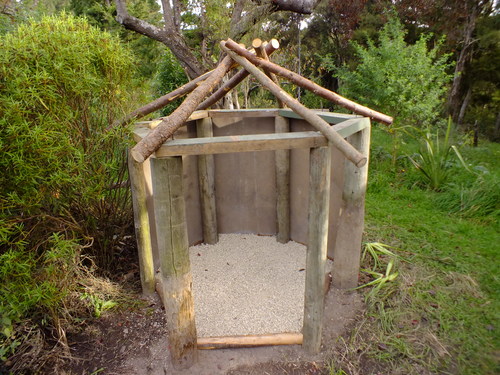The reciprocal frame roof results in a very strong self-supporting structure with very unique features. |
|
RECIPROCAL FRAME DESIGN This drawing illustrates a reciprocal frame designed with 3 beams. The following parameters define the structure:
It can be seen that two polygons are formed. The inner polygon is formed by the intersection of the beams and the outer by the beam ends. The number of sides to the polygon is equal to the number of beams used. The parameters ro, ri and H are specified as design requirements. These are dependent upon both structural and architectural factors. The remaining defining parameters can be calculated as shown. |
 |
Sector angle between the beams. θ = 360/n Overall plan length of beam. Plan length to first intersection. Plan length between intersections. Rise to first intersection. Rise between intersections. Slope length of beam. |
Some interesting observations can be made that must be considered during the design process:
|
